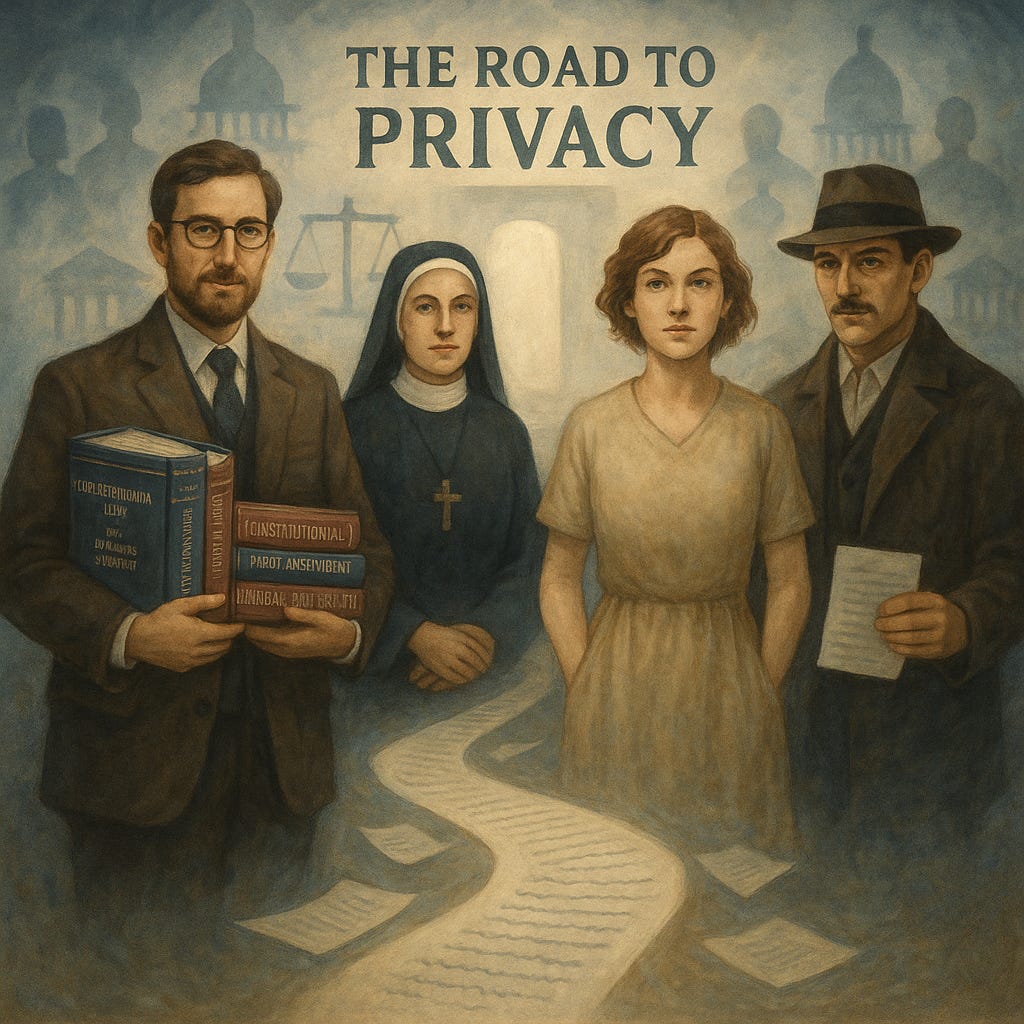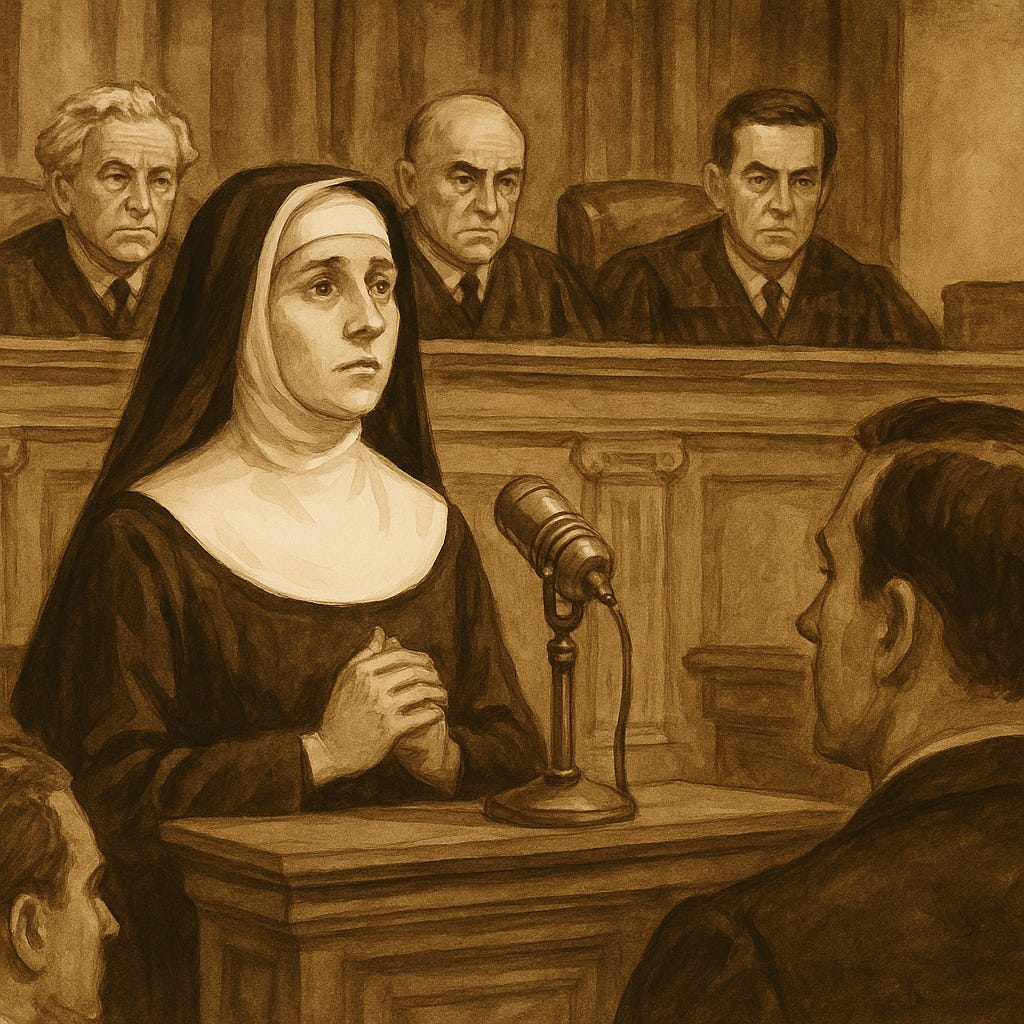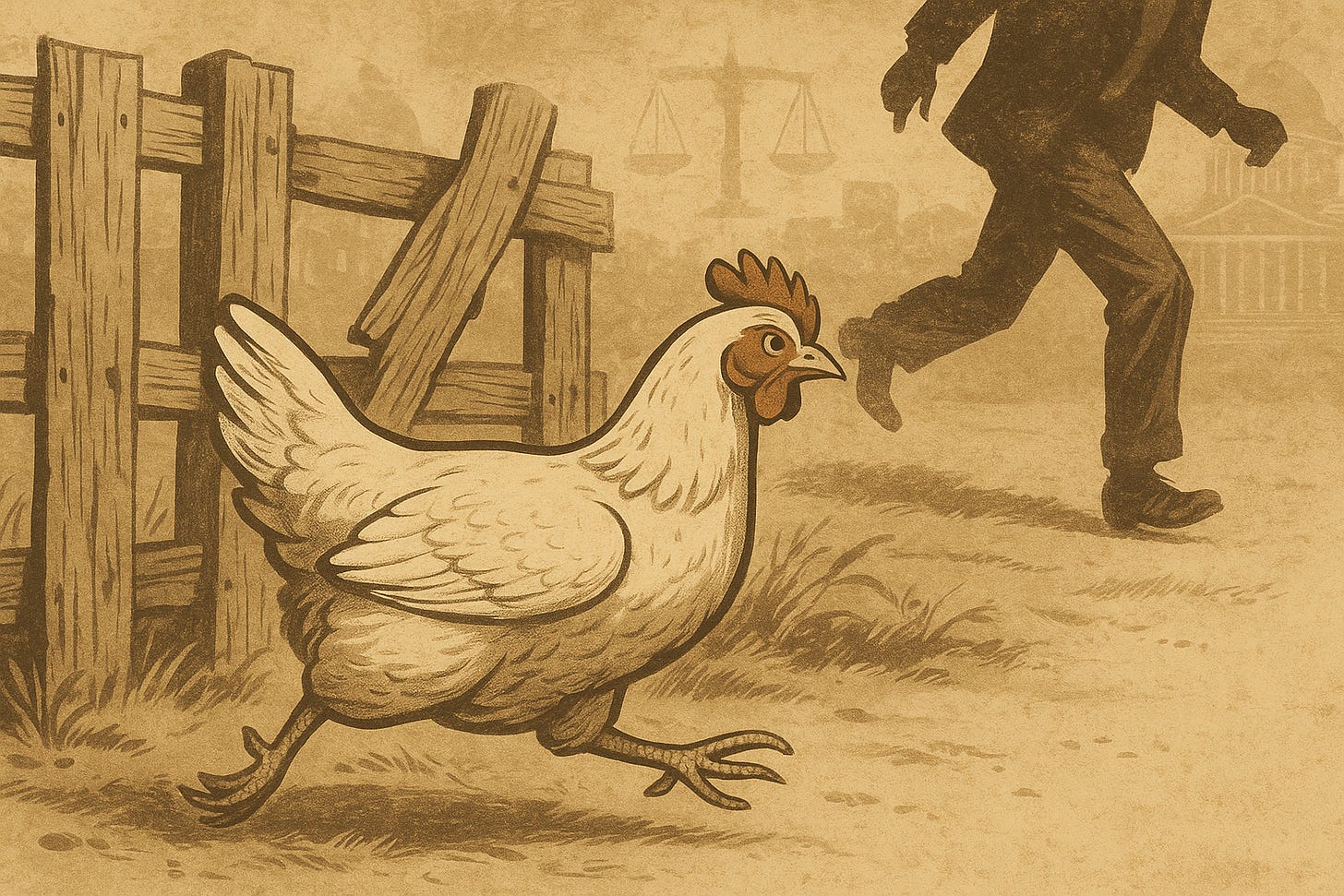9. The Road to Privacy
How a German teacher, a nun, a “feeble-minded” girl, and a chicken thief laid the groundwork for a right the Constitution never named
Before we dive deeper into modern privacy rights, let’s take a moment to rewind, because the road from Lochner to Griswold doesn’t follow a straight line so much as a winding footnote-strewn trail.
In our earlier explorations of Carolene Products and Footnote Four, we saw the Court begin to sort rights into first-class and coach. But long before that taxonomy was formalized, a handful of oddball cases (starring a German teacher, a group of nuns, a wrongly institutionalized girl, and a chicken thief) quietly started sketching the contours of what would later become the right to privacy.
Before the Supreme Court could declare that married couples had a right to use birth control in their own bedrooms, it had to answer a more fundamental question:
Does the Constitution protect personal choices that aren’t explicitly mentioned in its text?
The answer didn’t come all at once. It emerged through four unlikely cases over two decades—cases involving a language-loving teacher, some determined Catholic nuns, a young woman subjected to forced sterilization, and a man who just couldn’t stop stealing chickens.
Together, they helped build the foundation for what we now call the constitutional “right to privacy.”
Let’s meet them.
The German Teacher Who Wouldn’t Back Down (1923)
Nebraska, 1919. The First World War had just ended, and anti-German sentiment was boiling over. Seeking to prove its patriotic chops, the state passed a law banning foreign language instruction for young kids. English only. God bless America.
Enter Robert Meyer, a teacher at Zion Parochial School. His crime? Reading Bible stories in German to a 10-year-old boy.
He was fined $25 (about $350 today) for violating the Siman Act. But instead of paying up and backing down, Meyer took his case all the way to the Supreme Court.
In Meyer v. Nebraska (1923), the Court ruled in his favor. The Constitution didn’t mention the right to teach German, but Justice James McReynolds found protection in the Fourteenth Amendment’s Due Process Clause. Liberty, he wrote, includes the right “to acquire useful knowledge” and “to bring up children.”
For the first time, the Court recognized a substantive liberty—something deeper than fair procedures. Something about personal choice.
The Nuns Who Said “No Thanks” to Public School (1925)
A few years later, Oregon took things a step further. Fueled by anti-Catholic sentiment (and backed by the Ku Klux Klan), the state passed a law requiring all children to attend public schools. No more parochial education. Goodbye, Catholic schools.
The Society of Sisters sued—and in Pierce v. Society of Sisters (1925), they won.
Again, Justice McReynolds wrote the opinion. “The child is not the mere creature of the State,” he declared. Parents—not the government—had the right to choose private or religious education.
If Meyer protected educational language, Pierce protected educational philosophy. Together, they carved out a domain of family autonomy beyond the reach of state control.
The Tragedy of Carrie Buck (1927)
Not all early substantive due process cases expanded liberty. Some did the opposite—with devastating consequences.
Carrie Buck, institutionalized after being raped by her foster family’s nephew, became the test case for Virginia’s sterilization law. The state claimed she came from a line of “imbeciles”—her mother institutionalized, her daughter barely a toddler and already deemed “feeble-minded.”
In Buck v. Bell (1927), the Supreme Court upheld the law. Justice Oliver Wendell Holmes, revered by many for his sharp prose, wrote chillingly:
“Three generations of imbeciles are enough.”
Carrie was sterilized. So were over 65,000 others across the country in the years that followed.
We now know that Carrie, her mother, and her daughter were all of normal intelligence. Vivian, Carrie’s daughter, even made the honor roll before dying of illness at age 8.
Buck stands today as a warning: substantive due process can liberate, but it can also justify profound harm when guided by prejudice rather than principle.
The Chicken Thief Who Changed Everything (1942)
Then came Jack Skinner. As a repeat offender convicted of larceny and robbery, he seemed the perfect target for Oklahoma’s sterilization law, which allowed forced sterilization for those convicted of multiple felonies involving “moral turpitude.”
But there was a catch: white-collar crimes like embezzlement weren’t covered. The law, in effect, punished the poor and spared the privileged.
In Skinner v. Oklahoma (1942), the Supreme Court struck it down. Justice William O. Douglas wrote that procreation is “one of the basic civil rights of man.”
It was a turning point. The Court had begun to speak explicitly of bodily autonomy and reproductive freedom as constitutional values.
Skinner wasn’t just about chickens. It was about fairness, equal protection, and the emerging view that some personal liberties are too fundamental to be left to majoritarian whims.
So, What Does This All Have to Do with Privacy?
These four cases (Meyer, Pierce, Buck, and Skinner) didn’t use the word “privacy.” But together, they set the stage for it:
The Constitution protects more than what’s listed. The Due Process Clause safeguards unenumerated but deeply personal rights.
Family life matters. Decisions about children, education, and home life get special constitutional care.
Reproductive freedom is a civil right. Government interference with the body isn’t just bad policy but a rights violation.
Power can be misused. Buck is a somber reminder that judicial discretion, unmoored from justice, can enable cruelty.
By the time the Court decided Griswold v. Connecticut in 1965, these principles had already taken root.
Privacy, as we now understand it, didn’t appear overnight. It was cobbled together by a cast of unexpected figures who resisted the state’s intrusion into their most personal choices.
And we’re still living with the consequences.
Doctrinal take-away:
Understand these cases as stepping stones —
Recognize substantive liberty (Meyer, Pierce)
Warn against misuse (Buck)
Explicitly protect bodily integrity & reproduction (Skinner)





To uphold sterilization of a woman, but then to protect a man's right to procreate is interesting to say the least. From my point of view, it seems to be, in at least some ways, a prime example of the difference in treatment between men and women under the law that still persists to recent times. I am finding this more on my mind as I read the opinions for Dobbs.
It’s striking how Meyer and Pierce connected liberty to education and family decisions, while Skinner highlighted procreation and bodily autonomy. Buck stands out as a reminder that substantive due process can cut both ways depending on how the Court defines liberty.